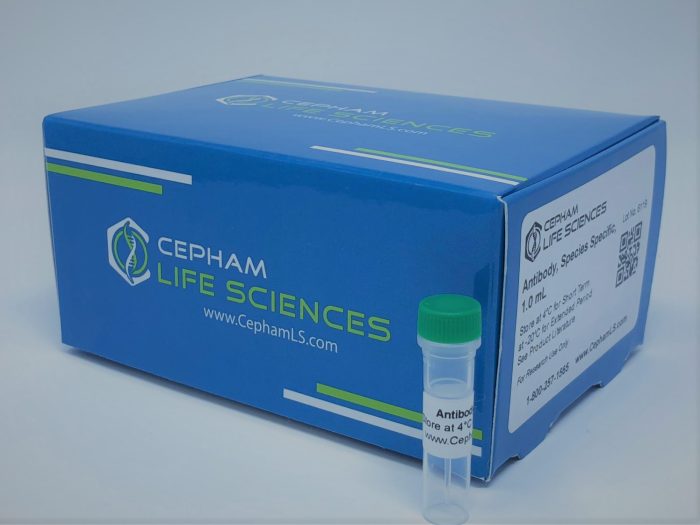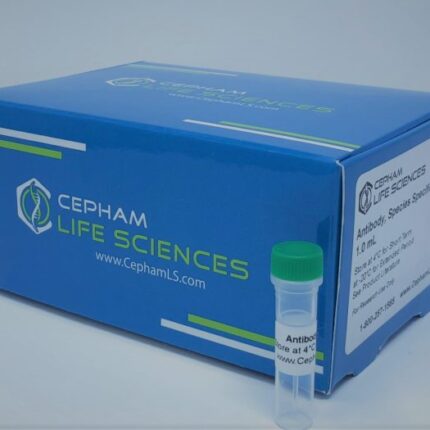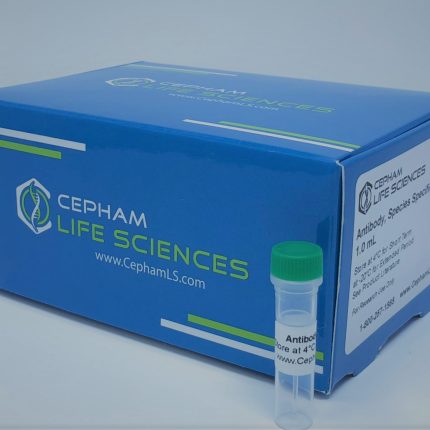Conjugate: HRP. Product Type: Polyclonal Antibody. Clonality: Polyclonal. Isotype: IgG. Form: Liquid. Storage: Upon receipt, store at -20°C or -80°C. Avoid repeated freeze. Aliases: FFA3R antibody; Ffar3 antibody; FFAR3_HUMAN antibody; Free fatty acid receptor 3 antibody; G protein coupled receptor 41 antibody; G-protein coupled receptor 41 antibody; gpcr41 antibody; GPR41 antibody; gpr42 antibody. Immunogen Species: Homo sapiens (Human). UniProt ID: O14843. Immunogen: Recombinant Human Free fatty acid receptor 3 protein (280-346AA). Raised in: Rabbit. Species Reactivity: Human. Tested Applications: ELISA, IHC, IF; Recommended dilution: IHC:1:20-1:200, IF:1:50-1:200. Background: G protein-coupled receptor that is activated by a major product of dietary fiber digestion, the short chain fatty acids (SCFAs), and that plays a role in the regulation of whole-body energy homeostasis and in intestinal immunity. In omnivorous mammals, the short chain fatty acids acetate, propionate and butyrate are produced primarily by the gut microbiome that metabolizes dietary fibers. SCFAs serve as a source of energy but also act as signaling molecules. That G protein-coupled receptor is probably coupled to the pertussis toxin-sensitive, G(i/o)-alpha family of G proteins. Its activation results in the formation of inositol 1,4,5-trisphosphate, the mobilization of intracellular calcium, the phosphorylation of the MAPK3/ERK1 and MAPK1/ERK2 kinases and the inhibition of intracellular cAMP accumulation (PubMed:12711604). Activated by SCFAs and by beta-hydroxybutyrate, a ketone body produced by the liver upon starvation, it inhibits N-type calcium channels and modulates the activity of sympathetic neurons through a signaling cascade involving the beta and gamma subunits of its coupled G protein, phospholipase C and MAP kinases. Thereby, it may regulate energy expenditure through the control of the sympathetic nervous system that controls for instance heart rate. Upon activation by SCFAs accumulating in the intestine, it may also signal to the brain via neural circuits which in turn would regulate intestinal gluconeogenesis. May also control the production of hormones involved in whole-body energy homeostasis. May for instance, regulate blood pressure through renin secretion. May also regulate secretion of the PYY peptide by enteroendocrine cells and control gut motility, intestinal transit rate, and the harvesting of energy from SCFAs produced by gut microbiota. May also indirectly regulate the production of LEP/Leptin, a hormone acting on the CNS to inhibit food intake, in response to the presence of short-chain fatty acids in the intestine. Finally, may also play a role in glucose homeostasis. Besides its role in energy homeostasis, may play a role in intestinal immunity. May mediate the activation of the inflammatory and immune response by SCFAs in the gut, regulating the rapid production of chemokines and cytokines by intestinal epithelial cells. Among SCFAs, the fatty acids containing less than 6 carbons, the most potent activators are probably propionate, butyrate and pentanoate while acetate is a poor activator (PubMed:12496283, PubMed:12711604). Purification Method: >95%, Protein G purified. Buffer: Preservative: 0.03% Proclin 300
Constituents: 50% Glycerol, 0.01M PBS, PH 7.4. Target Names: FFAR3.
FFAR3 Antibody, HRP conjugated
$174.30 – $313.95
FFAR3 Antibody, HRP conjugated
| Size |
50ug, 100ug |
|---|
[vc_row][vc_column][vcex_button url=”`{`acf field=“safety“`}`” size=”large” text_source=”custom_text” aria_label=”Safety Datasheet” target=”blank” icon_left=”ticon ticon-file-pdf-o” icon_left_padding=”10px”]Safety Datasheet[/vcex_button][/vc_column][/vc_row]

MAECENAS IACULIS
Vestibulum curae torquent diam diam commodo parturient penatibus nunc dui adipiscing convallis bulum parturient suspendisse parturient a.Parturient in parturient scelerisque nibh lectus quam a natoque adipiscing a vestibulum hendrerit et pharetra fames nunc natoque dui.
ADIPISCING CONVALLIS BULUM
- Vestibulum penatibus nunc dui adipiscing convallis bulum parturient suspendisse.
- Abitur parturient praesent lectus quam a natoque adipiscing a vestibulum hendre.
- Diam parturient dictumst parturient scelerisque nibh lectus.
Scelerisque adipiscing bibendum sem vestibulum et in a a a purus lectus faucibus lobortis tincidunt purus lectus nisl class eros.Condimentum a et ullamcorper dictumst mus et tristique elementum nam inceptos hac parturient scelerisque vestibulum amet elit ut volutpat.
Related products
CONTACT
11830 W Market Place, Suite K
Fulton, MD 20759
USA
Phone: +1-410-636-4954
Toll Free:1-800-257-1565 (North America)
Fax:+1- 410-636-6197
Email: Info@CephamLS.com







